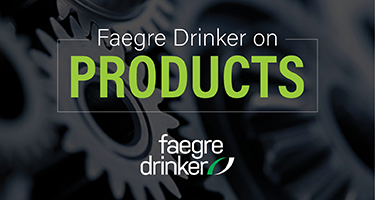Is the decision to submit a 510(k) application versus a Premarket Application (PMA) at the sole discretion of a medical device manufacturer? The answer is not always clear to product liability lawyers, judges, and juries. FDA recently published revised guidance on its “Refuse to Accept Policy for 510(k)s” that reinforces and clarifies that the regulatory path may be analyzed multiple times by FDA before it clears a 510(k) device. This clarification underscores the reality that the type of application submitted is largely dictated by the agency, not the applicant. This post discusses some key takeaways from this new guidance before briefly discussing how this guidance may be implicated in medical device litigation.
When a 510(k) application is initially submitted, FDA has 15 days to determine whether to accept the application for substantive review. The purpose of this initial review is to focus FDA’s substantive review on complete submissions and to better enable the agency to meet the performance timelines and goals set out in multiple acts (most recently the Medical Device User Fee Amendments of 2017 (MDUFA IV). In its announcement of the guidance update, FDA highlighted that the revisions provide “additional clarity that devices ineligible for 510(k) (for example, a device type classified in Class III requiring PMA) may be refused by the FDA.” In fact, one of the preliminary questions to be answered during this 510(k) acceptance review is whether the device type is eligible for a 510(k) submission. The FDA advises, “If a 510(k) is not appropriate, FDA staff should make this determination during the acceptance review and notify the submitter of the determination.”
However, this preliminary review of the application is not the only time when the FDA evaluates the appropriateness of the 510(k) pathway. The revised FDA guidance explains, “This preliminary question is not intended to identify submissions for which a substantive review is required in order to determine if 510(k) is an inappropriate approach (e.g., device has a new intended use or device has different technological characteristics that raise different questions of safety and effectiveness).” If FDA does not meet the 15-day deadline for its acceptance review, the application moves on to substantive review, during which FDA again has another opportunity at a later stage of the review process to determine whether the 510(k) is the right application type.
How can these regulatory weeds crop up in the context of litigation, long after a device has been cleared by FDA? In medical device litigation, the parties frequently spar over the legitimacy and import of clearance via the 510(k) regulatory pathway. From the defense perspective, there are considerations of how to explain this pathway, being careful to use the right verb of “cleared” rather than “approved,” and explaining that safety and effectiveness are evaluated during the 510(k) process, even if Medtronic v. Lohr, 518 U.S. 470 (1996), says otherwise. From the plaintiff’s point of view, their experts may challenge whether safety and effectiveness are truly evaluated during the 510(k) review, and may then question the relevance of the regulatory process at trial. In some cases, the 510(k) process has been wrongfully characterized as a type of “choose your own adventure” in which FDA’s review is downplayed as little more than a rubber stamp on a manufacturer’s submission. While experienced regulatory experts know better and can provide insight into FDA’s review processes for 510(k), the agency guidance provides additional, neutral support about how and when a 510(k) application is evaluated to determine if a device is on the right regulatory track.
The material contained in this communication is informational, general in nature and does not constitute legal advice. The material contained in this communication should not be relied upon or used without consulting a lawyer to consider your specific circumstances. This communication was published on the date specified and may not include any changes in the topics, laws, rules or regulations covered. Receipt of this communication does not establish an attorney-client relationship. In some jurisdictions, this communication may be considered attorney advertising.

